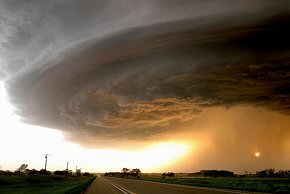
A new study in the Proceedings of the National Academy of Sciences describes alarming changes in rainfall patterns which the researchers say indicates an out-of-kilter precipitation cycle that is leading to “rain is falling in all the wrong places, for all the wrong reasons.”
The study also notes how freshwater is flowing into Earth’s oceans in greater amounts every year, thanks to more frequent and extreme storms linked to climate change. Astonishingly, 18 percent more water fed into the world’s oceans from rivers and melting polar ice sheets in 2006 than in 1994.
“That might not sound like much – 1.5 percent a year – but after a few decades, it’s huge,” said The University of California’s Jay Famiglietti, principal investigator on the study. “In general, more water is good. But here’s the problem: Not everybody is getting more rainfall, and those who are may not need it. What we’re seeing is exactly what the Intergovernmental Panel on Climate Change predicted – that precipitation is increasing in the tropics and the Arctic Circle with heavier, more punishing storms. Meanwhile, hundreds of millions of people live in semiarid regions, and those are drying up.”
The study used satellite records of sea level rise, precipitation and evaporation to put together a unique 13-year record – the longest and first of its kind. But the researchers cautioned that although they had analyzed more than a decade of data, it was still a relatively short time frame. Further study is needed, they said, and is under way.
Related:
Change in monsoon patterns likely
Groundwater depletion accelerating worldwide
Ozone hole could be lesser of two evils
Yes, It Does Always Rain On The Weekend
New doomsday map shows planet’s dire state


















Comments are closed.